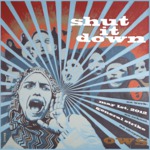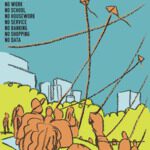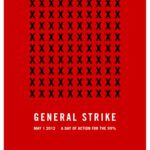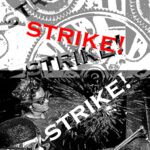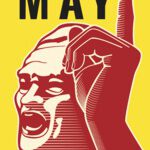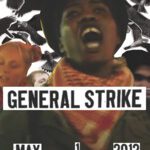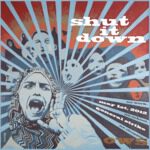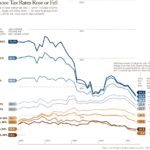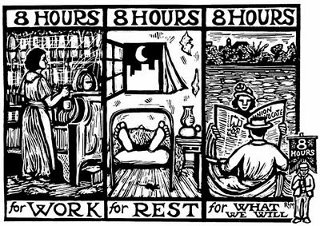 The Occupy Movement has revived May Day. For far too many years, this holiday, which was of course also a solidarity-building occasion, has been ignored by the US labor movement. Ironic, given the fact that May Day actually began in the US.
The Occupy Movement has revived May Day. For far too many years, this holiday, which was of course also a solidarity-building occasion, has been ignored by the US labor movement. Ironic, given the fact that May Day actually began in the US.
Here’s a bit of the history behind May Day. In 1884, militant unions in the US declared that eight hours would constitute a legal day’s work beginning on May 1, 1886. When workers went on strike at a factory in Chicago on May 3, 1886, police fired into the peacefully assembled crowd, killing four and wounding many others. The workers movement called for a mass rally the next day in Haymarket Square to protest this brutality. The rally proceeded peacefully until the end when 180 police officers entered the square and ordered the crowd to disperse. At that point, someone threw a bomb, killing one police officer and wounding 70 others. The police responded by firing into the crowd, killing one and injuring many others.
Following the Haymarket Affair, eight of the city’s most active unionists were charged with conspiracy to commit murder even though only one was actually present at the meeting. All eight were found guilty and sentenced to death. Commemoration of this day and the outrages against justice that followed quickly became an key element of the international struggle for worker’s rights.
In 1904, the International Socialist Congress called on “all Social Democratic Party organizations and trade unions of all countries to demonstrate energetically on May First for the legal establishment of the 8-hour day, for the class demands of the proletariat, and for universal peace.” The congress made it “mandatory upon the proletarian organizations of all countries to stop work on May 1, wherever it is possible without injury to the workers.”
Why was May Day not celebrated in the US? In a demonstration of the complicit nature of segments of the US labor movement, the Knights of Labor (a racially exclusionary organization) caved in to the demand of President Grover Cleveland that the Haymarket Massacre would not be commemorated on May Day. So we now have a state-sanctioned and relatively toothless Labor Day in early September.
Yesterday Occupy revived the suppressed tradition of May Day on a joyous celebration of solidarity and outrage. The day started out for me with brilliant talks offered in Madison Square Park by folks like David Harvey, Frances Fox Piven, Andrew Ross, Drucilla Cornell. The Free University provided a great space to listen to debates about a series of key issues, from the right to the city, to student loans and debt, to the history of the labor movement.
From the Free University we marched down to Union Square, where more speakers and music were on offer. The entire park gradually got jam packed with people. This was a great opportunity to hang out with friends and make connections with activists from a variety of different organizations and walks of life. It was also a moment to revel in the carnivalesque spirit of the Occupy movement. Here are some photos that I think conjure up a sense of the celebratory atmosphere in Union Square:
[slideshow]
Unfortunately, all was not wine and roses. The police refused to allow us to march out of Union Square. As this image  makes clear, they set up steel cattle pens in order to box marchers in, and then arbitrarily blocked off exist from these pens when it was time to march. Most of the demonstrators around me, seasoned protesters all, told me that this was in order to demonstrate the police’s power over us rather than to preserve our safety during the march. In fact, once they eventually let us out of the cattle pens, instead of allowing us to march directly down Broadway, where the march had been permitted, the police instead directed us down W. 17th street to 6th Avenue, so that we had to walk through the middle of traffic. This was obviously not a safe situation. Police officers then lined the street and tried to force us onto the sidewalk, despite the fact that our march was permitted. Tempers quickly frayed, and it looked like things were not going to go well. A friend of mine was violently pushed into a pile of garbage on a sidewalk by a group of police when he challenged their attempt to force us onto the sidewalk. Thankfully, we eventually got back to Broadway and the rest of the march proceeded in a jubilant spirit.
makes clear, they set up steel cattle pens in order to box marchers in, and then arbitrarily blocked off exist from these pens when it was time to march. Most of the demonstrators around me, seasoned protesters all, told me that this was in order to demonstrate the police’s power over us rather than to preserve our safety during the march. In fact, once they eventually let us out of the cattle pens, instead of allowing us to march directly down Broadway, where the march had been permitted, the police instead directed us down W. 17th street to 6th Avenue, so that we had to walk through the middle of traffic. This was obviously not a safe situation. Police officers then lined the street and tried to force us onto the sidewalk, despite the fact that our march was permitted. Tempers quickly frayed, and it looked like things were not going to go well. A friend of mine was violently pushed into a pile of garbage on a sidewalk by a group of police when he challenged their attempt to force us onto the sidewalk. Thankfully, we eventually got back to Broadway and the rest of the march proceeded in a jubilant spirit.
Not surprisingly, mainstream media coverage latched onto the scuffles and arrests that resulted from the police kettling strategies rather than focusing on the joyous and constructive spirit of the rest of the day. This article in the New York Times is typical of such a jaundiced approach. Luckily, though, there are other sources of information and reflection about the events of yesterday, including this excellent coverage on Democracy Now, which highlights the international dimensions of the protests.
It was an undeniably great day for radical activism and for the movement for global justice. That said, this May Day was more of a celebration of our collective and potential powers than a real General Strike (which is what many Occupy activists had called for). Much work remains to be done before the dispersed powers of the movement can be collected into a force capable of doing real damage to capital, let alone giving birth to a new world.
But although such skeptical assessments are perhaps necessary, they should not overwhelm the joy of the day. I’ll close therefore close this post with some video clips that capture the ridiculously creative energies unleashed by the movement. First of all, here’s a bit of fancy footwork and wonderful brass music from the Rude Mechanical Orchestra:
[youtube=http://www.youtube.com/watch?v=4diYc4zodRQ]
And here, to remind us of the history of Union Square and to challenge the Christian evangelical movement on its own terrain, is the Reverend Billy and the Stop Shopping Gospel Choir:
[youtube=http://www.youtube.com/watch?v=Ts1MIugwrwY]
Last of all, here, once again, is the Rude Mechanical Orchestra, performing the uproarious Smash the Banks Polka:
[youtube=http://www.youtube.com/watch?v=rWblaJHLrJo]
